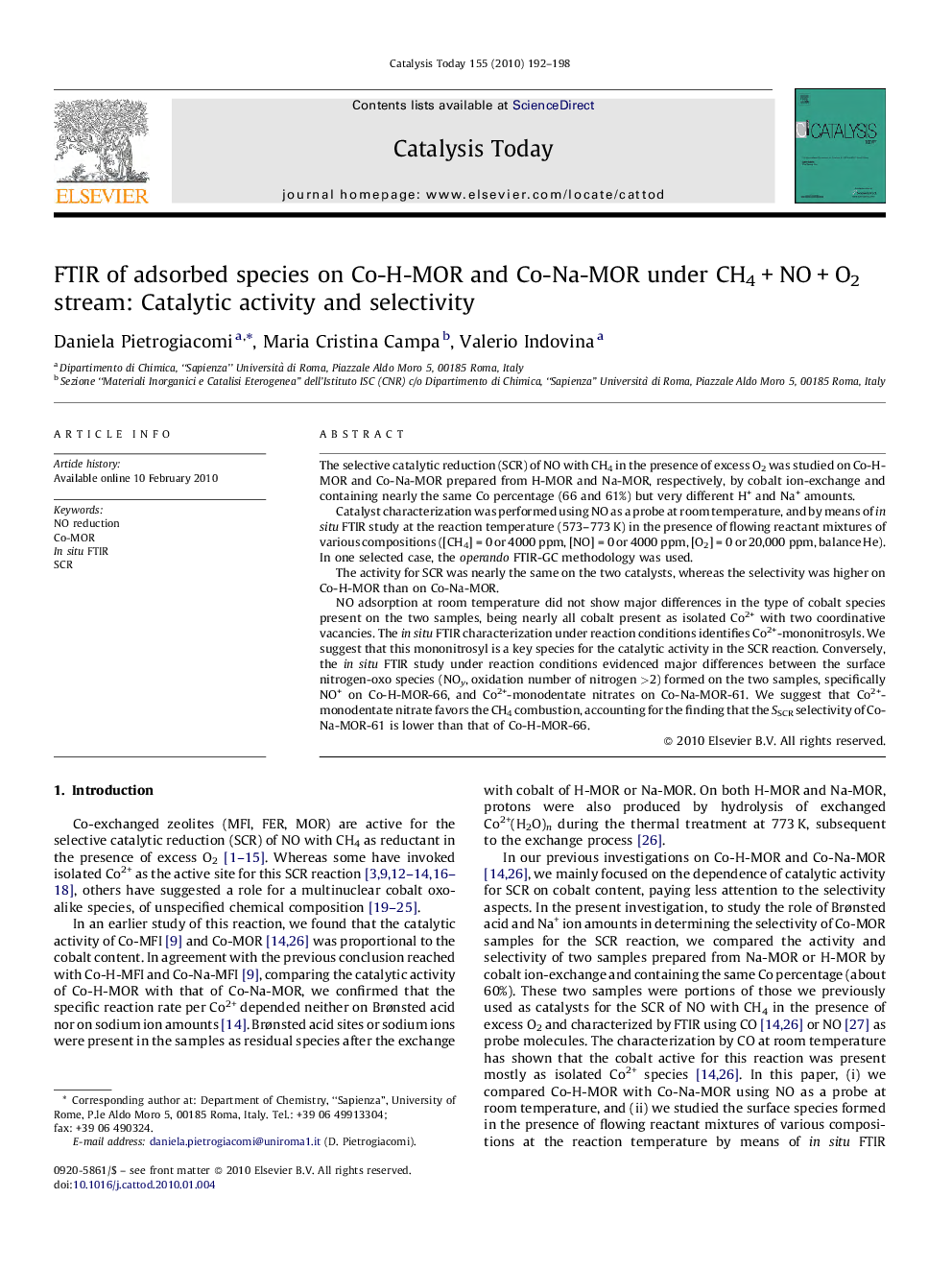| Article ID | Journal | Published Year | Pages | File Type |
|---|---|---|---|---|
| 56163 | Catalysis Today | 2010 | 7 Pages |
The selective catalytic reduction (SCR) of NO with CH4 in the presence of excess O2 was studied on Co-H-MOR and Co-Na-MOR prepared from H-MOR and Na-MOR, respectively, by cobalt ion-exchange and containing nearly the same Co percentage (66 and 61%) but very different H+ and Na+ amounts.Catalyst characterization was performed using NO as a probe at room temperature, and by means of in situ FTIR study at the reaction temperature (573–773 K) in the presence of flowing reactant mixtures of various compositions ([CH4] = 0 or 4000 ppm, [NO] = 0 or 4000 ppm, [O2] = 0 or 20,000 ppm, balance He). In one selected case, the operando FTIR-GC methodology was used.The activity for SCR was nearly the same on the two catalysts, whereas the selectivity was higher on Co-H-MOR than on Co-Na-MOR.NO adsorption at room temperature did not show major differences in the type of cobalt species present on the two samples, being nearly all cobalt present as isolated Co2+ with two coordinative vacancies. The in situ FTIR characterization under reaction conditions identifies Co2+-mononitrosyls. We suggest that this mononitrosyl is a key species for the catalytic activity in the SCR reaction. Conversely, the in situ FTIR study under reaction conditions evidenced major differences between the surface nitrogen-oxo species (NOy, oxidation number of nitrogen >2) formed on the two samples, specifically NO+ on Co-H-MOR-66, and Co2+-monodentate nitrates on Co-Na-MOR-61. We suggest that Co2+-monodentate nitrate favors the CH4 combustion, accounting for the finding that the SSCR selectivity of Co-Na-MOR-61 is lower than that of Co-H-MOR-66.
